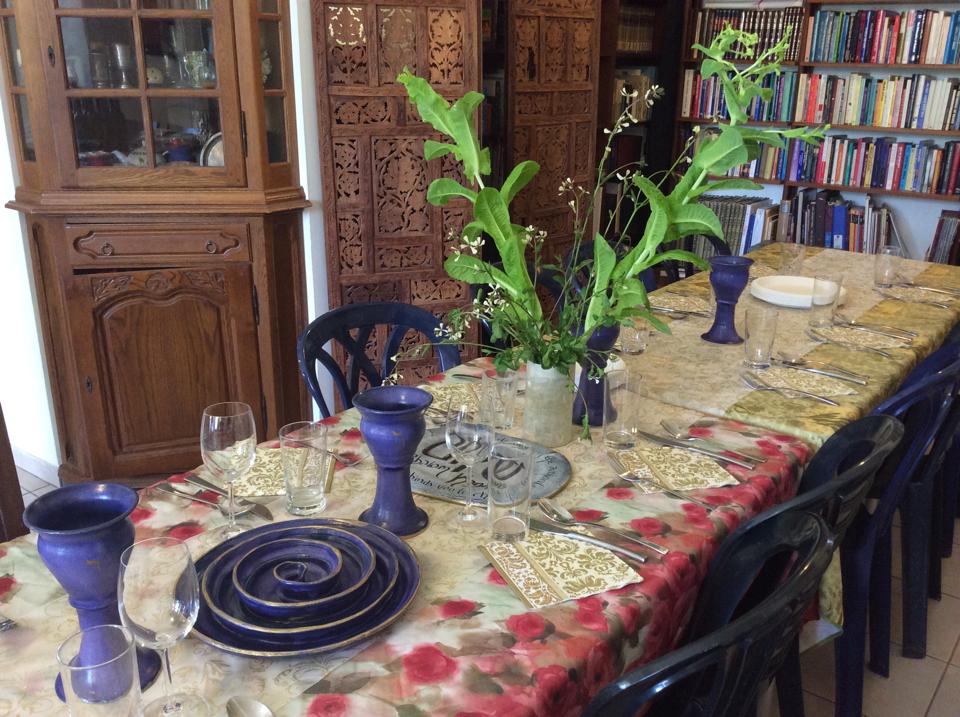|
|
What Am I Willing To Die Living For? - A Look at Freedom in the Seder The stage is set thusly: We're in Masechet Pesachim in the Talmud, chapter 10. Our sages are at it again. The makhloket (argument) this time is over when to lean during the Passover seder. One position holds that we only need to lean to the left for the first two cups of wine, as this is the point where our freedom commences. After we've finished reading the story, what's done is done! The other position argues that we only recline for the third and fourth cups, because for the first two we are still slaves! Only after we've read the story of Passover, are we truly free. As we know, the halakhah (ruling) here is that we recline for all four cups, combining both opinions into one. Clearly, these two positions show some sort of correlation between reclining and freedom, but there also has to be some central difference in the type of freedom we are celebrating if the Rabbis are to argue about it. What is it the Rabbis are really arguing about? To answer this, I want to begin by returning to Purim. Rabbi Joel Levy teaches that on Purim our lives are turned inside out. We realize the fictitious nature of our own stories and our own narratives. He even encourages people to dress up as something they deeply want to express about themselves, to expose their innermost desire, as a way of making more tangible this turning inside out. This experience is so painful, he teaches, that we have to drink to lessen the pain. How is it, though, that one month later, one month after we discover that all our stories are made up, can we celebrate Pesach, which commemorates the central-most narrative of the Jewish people? The answer is that the story that we read is not just a story of our ancestors thousands of years ago, but it is in fact our story today as well. On Pesach we are supposed to ask ourselves, “What is my personal Mitzrayim [Egypt]?” What is it I want to leave behind this year? What is it that is holding me back, that I need to break free from this year? This is why Purim is so important. On Purim, we realize that our own narratives are only of our own creation. This is painful, but it allows us on Pesach to finally let go of those narratives that are holding us back. It allows us to break free of the narratives that no longer work in our lives. So on Pesach, we read the story of our own narrative for the last time! This is the essence of the first two cups. We drink to symbolize the freedom from our old narratives, the freedom from our personal Mitzrayim. After we read the story? 'What's done, is done.' What then do the second two cups symbolize? They symbolize the freedom to write our own new narratives. How though, do we go about writing these freedom to narratives? Last week, I watched the movie Selma on my flight back to Israel. This fantastic movie recalls the true story of Martin Luther King Jr. and the civil rights movement's march from Selma to Montgomery, Alabama, which propelled the Civil Rights Act and the equal right for people of color to vote in the United States. In one poignant scene, a young non-violent activist, Jimmy Lee Jackson, is brutally murdered by Alabama policemen. At his funeral, Martin Luther King Jr. says the following: “Our lives are not fully lived if we are not willing to die for those we love and what we believe. Today Jimmy, we're doing the living and you've done the dying.” Today, we are doing the living and our ancestors have done the dying. Whether they were the Israelites who wandered for years in the desert and never had a chance to go into the holy land or our more recent ancestors who were the victims of pogroms and the Holocaust, these people never had this freedom to. They only had a hope that someday they would have freedom from the oppression, cruelty and antisemitism they faced. Today, we are blessed to have an unprecedented level of freedom. Today, we do indeed have the freedom to write our own narratives. While we may be purely self-concerned in our quest for freedom from, I contend that we cannot be selfish in creating our new freedom narratives. Freedom to requires that we write others into our narrative, especially those less fortunate than us, because we too 'were once slaves in Egypt'. In the same vane as MLK, we must ask ourselves 'What is it that I am willing to die living for?' What is so important that I'll leave my 'comfortable suffering' in Mitzrayim for? What is so important that I'm willing to wander in the desert for, possibly never arriving in the promised land? The first two cups, we celebrate the freedom from our personal Mitzrayim. The second two cups, we celebrate the freedom to create new narratives in our lives. It's not going to be easy. In fact, it may cause us much pain. But it is my blessing for us all that this year we can fully dedicate ourselves to our new narratives and to the causes we believe in, and that we are successful in leaving our old chametz behind. And may Hashem ensure that when our lives are over, we will have made a positive difference in the lives of others. Hag Kasher v'Sameach |
| Excerpt: On Passover, we recline for all four cups. But what is difference between the freedom celebrated in the first two cups and the freedom celebrated in the second two? |